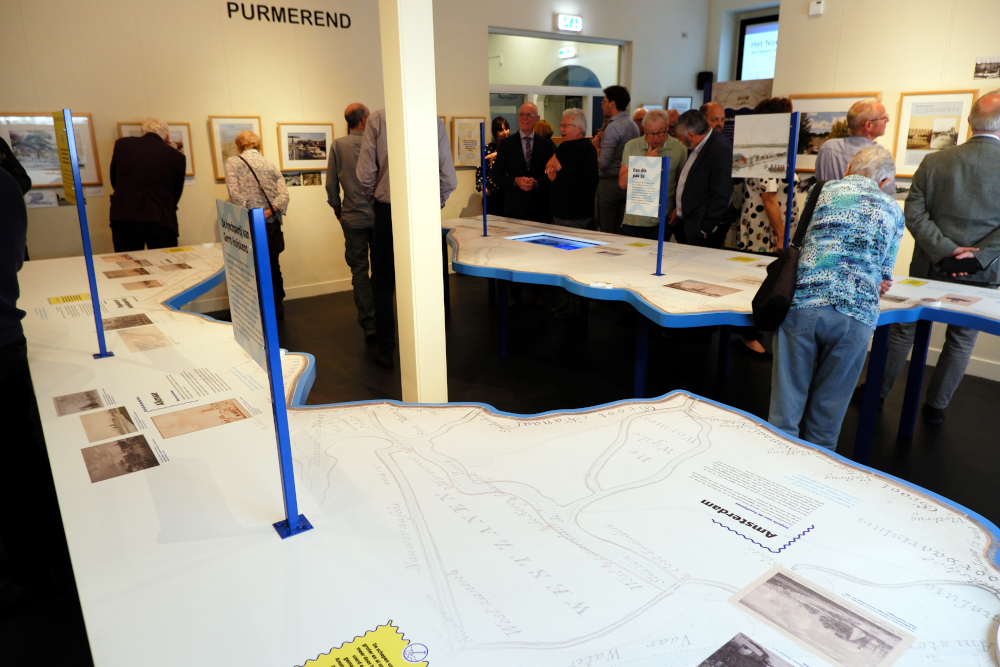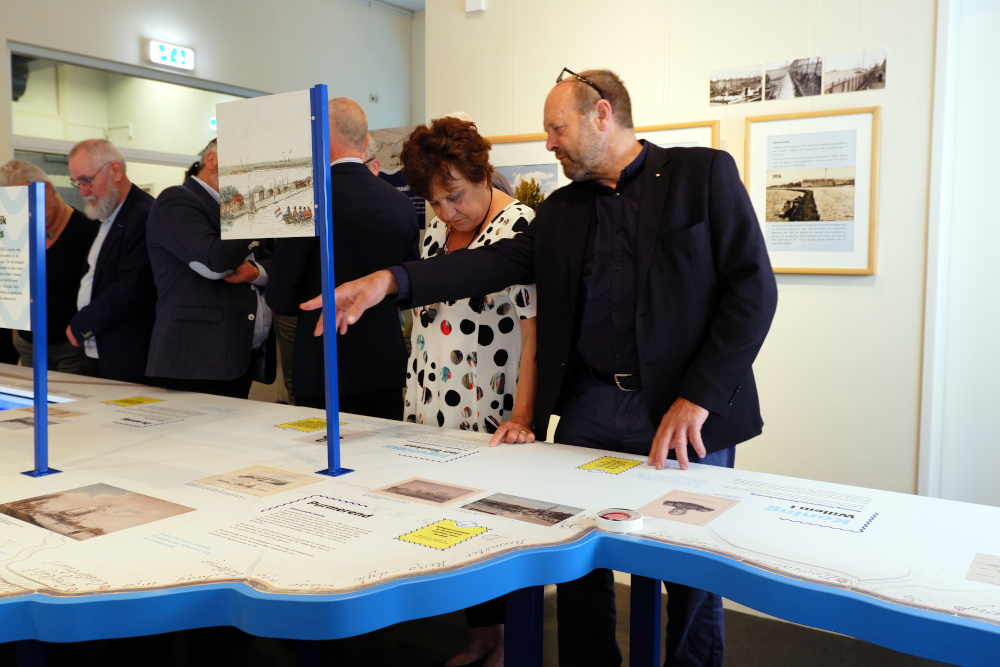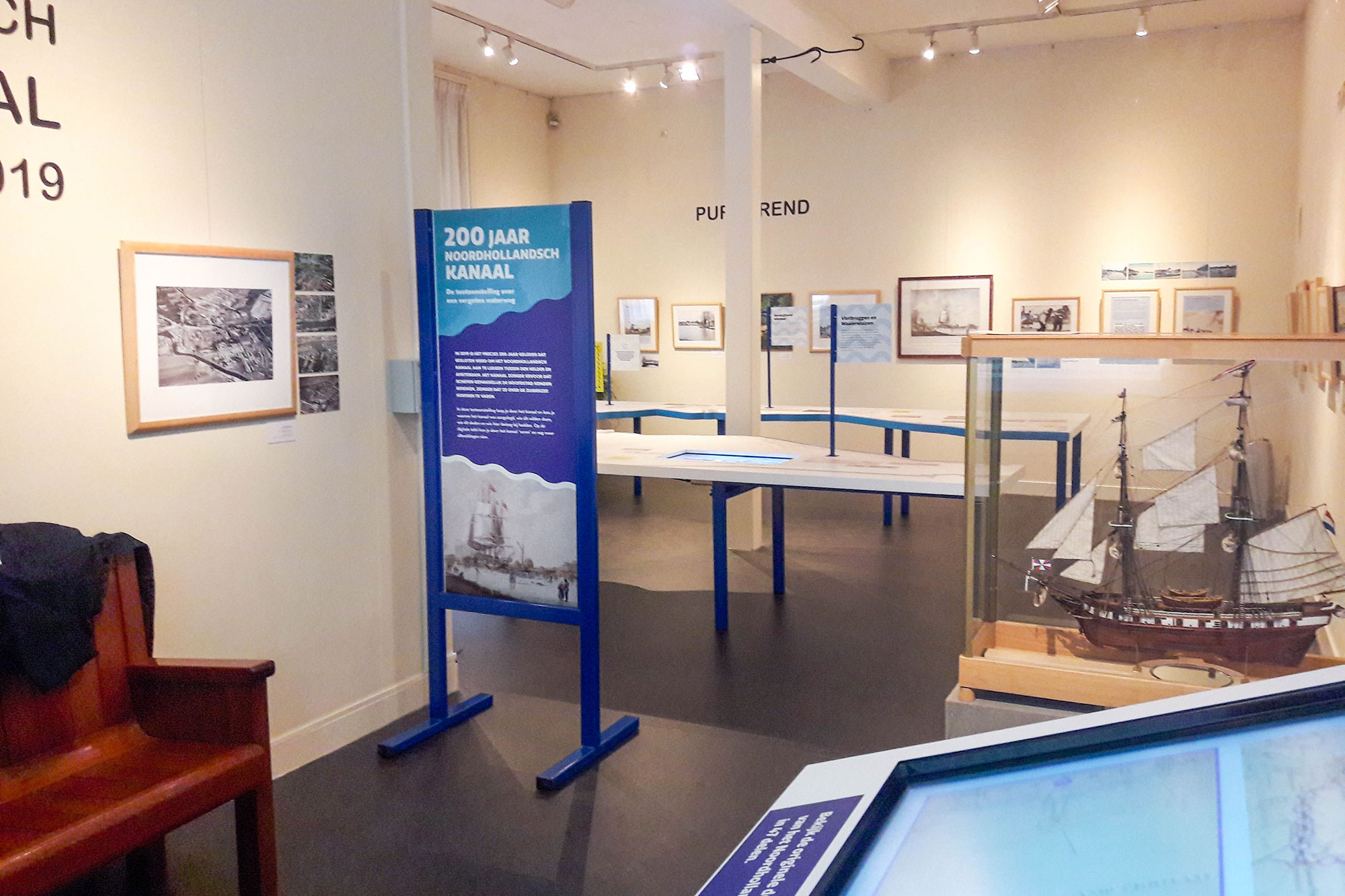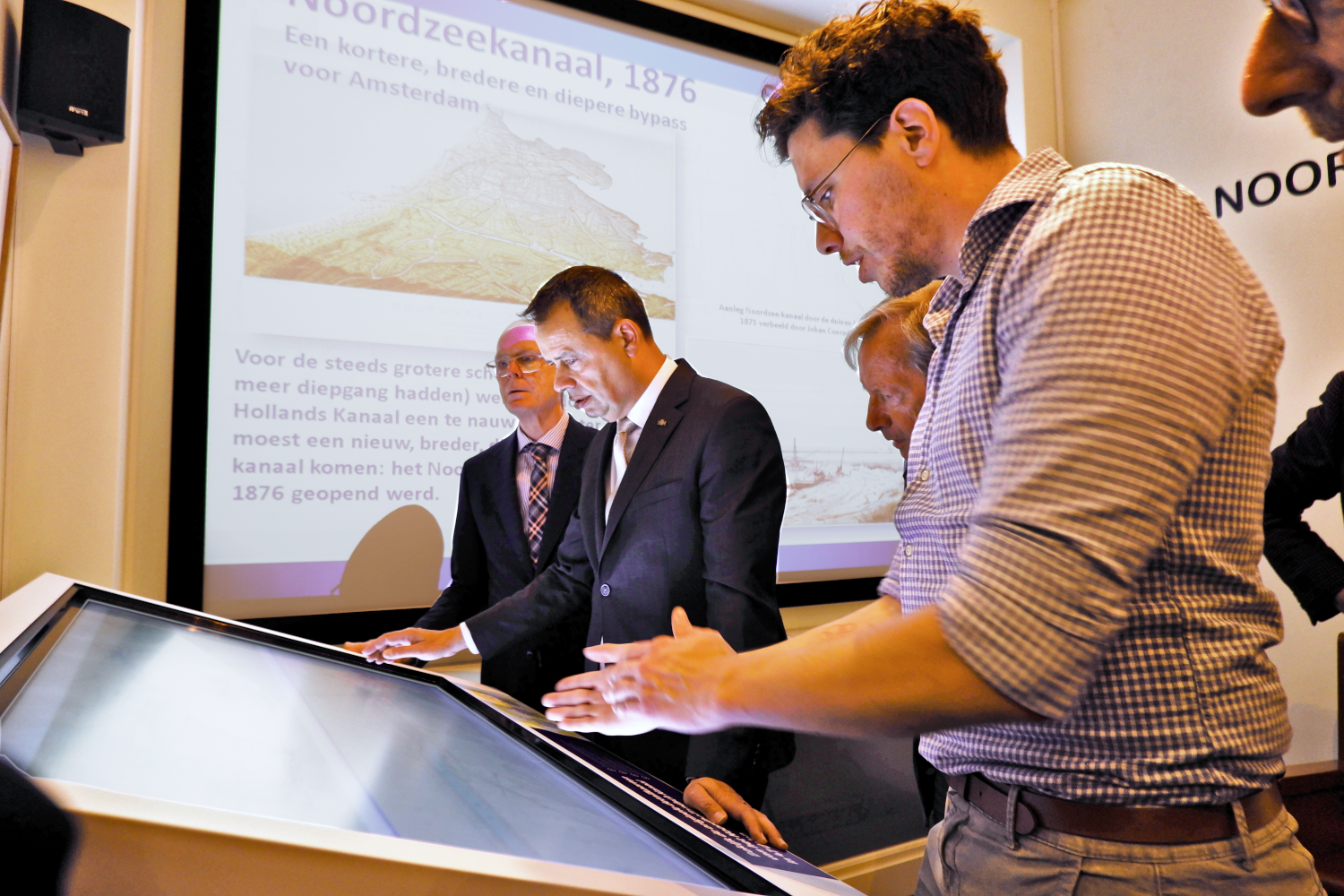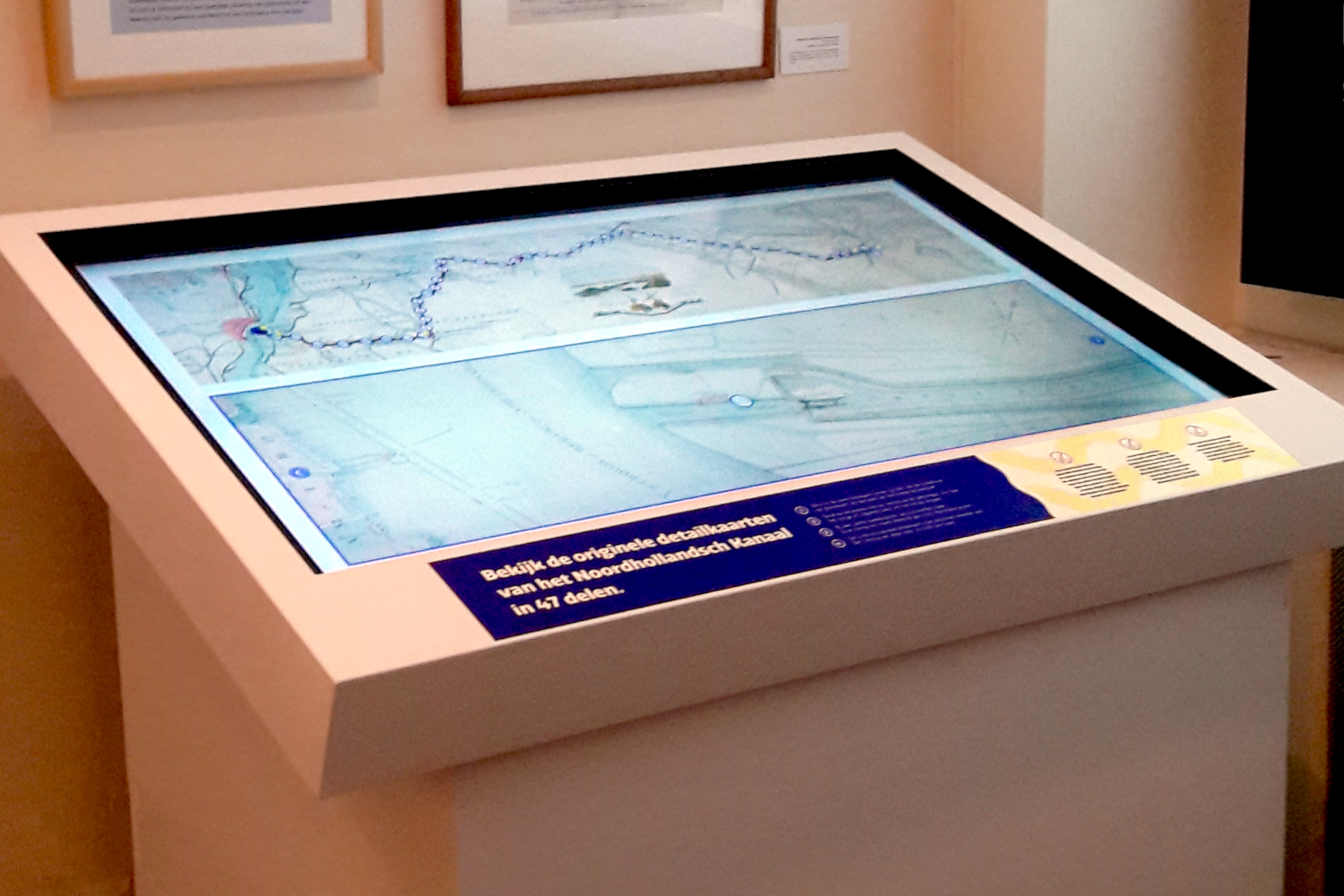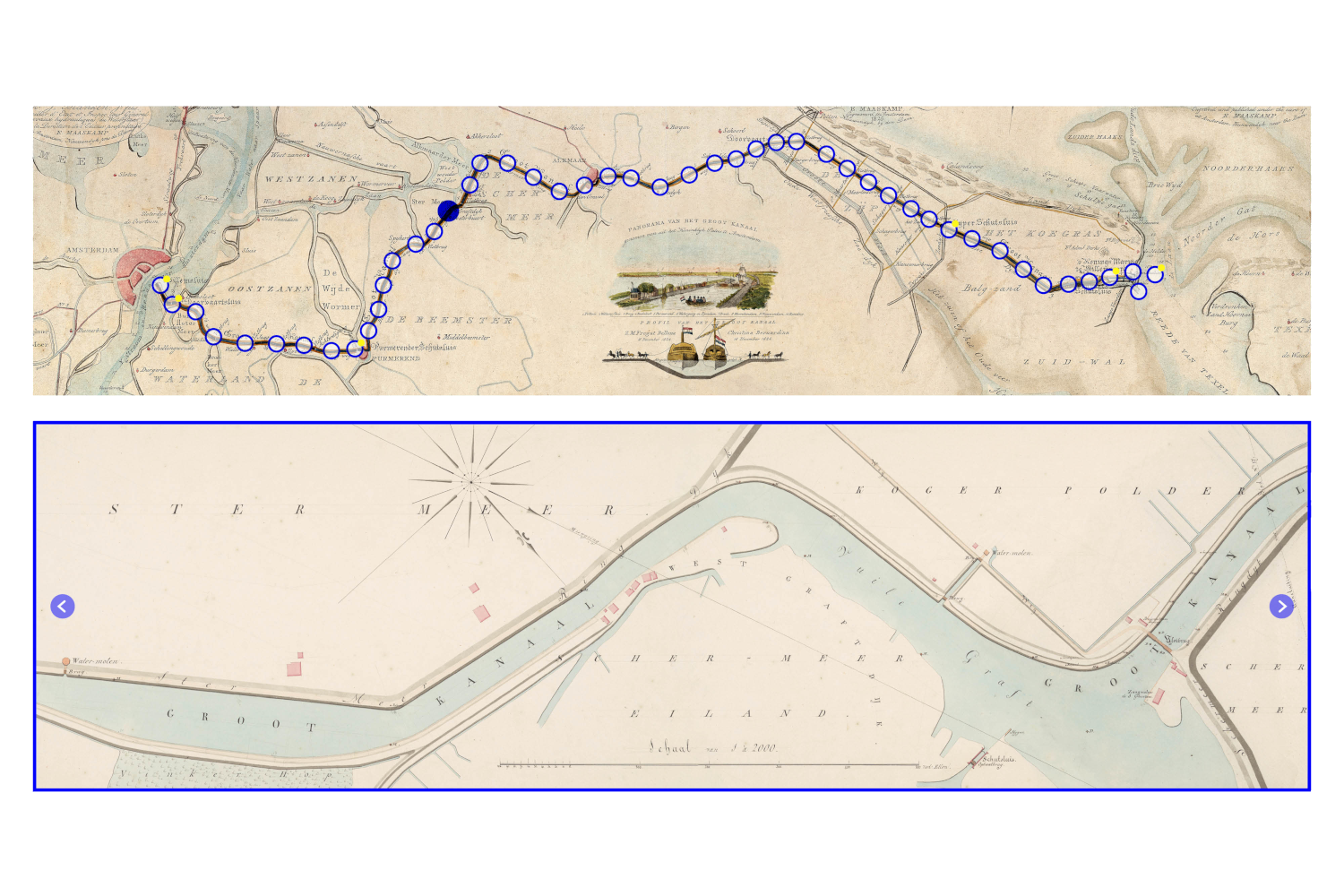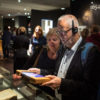
200 years Noordhollandsch Kanaal
The exhibition about a forgotten waterway
The construction of the Noordhollandsch Kanaal, a canal that connects the cities of Amsterdam and Den Helder, began precisely 200 years ago. The waterway spans the entire province of North Holland and runs through the cities Alkmaar and Purmerend. At the time, it was incredibly important for shipping, now it’s as good as forgotten. For eighty years, the Noordhollandsch Kanaal offered ships that anchered at the harbour of the island Texel a fast route to Amsterdam. The downfall of the Noordhollandsch Kanaal as an important trade route set in when it became technically feasible to construct a canal directly from Amsterdam to the North Sea.
To celebrate the anniversary of the “forgotten waterway”, the North Holland Archives and Synergique have developed a travelling exhibition together. The exhibition is based upon the archival image collection, which is displayed upon the two main exhibition modules that together form the course of the canal. In addition, the archival images come alive in animation and on an interactive, digital table. The travelling exhibition starts in Purmerend, after which it goes on to Alkmaar and finally makes its last stop in Den Helder.
Client
NORTH HOLLAND ARCHIVES
Term: 24/05/2019-13/04/2020
Year: 2019/2020
Location: Purmerends Museum, the Library Alkmaar de Mare, Dutch Navy Museum Den Helder
Photography: Synergique

“Synergique has shown that they can make an impressive exhibition with a modest concept in the exhibition ‘200 years Noordhollandsch Kanaal’. Synergique’s guidance and own initiative were most welcome, and I look forward to our next collaboration.”
Mart van de Wiel – senior employee presentation and Provincial Atlas
The exhibition consists of two large exhibition modules. Each module has one edge that follows the contour of the canal. Next to each other, the two modules represent the province of North Holland with the canal running through the middle. Visitors can walk both around the modules and in between them, as if they are standing “in the canal”.



The exhibition modules are covered with a printed sample of a nineteenth-century map of North Holland on top of which copies of the many archival images of the canal are displayed. The different interests of the people who were involved in making the canal are explained in text. Written stories about the cities along the canal are also printed on the exhibition modules. The cities on the printed map have been raised by an inch, making their original size and location around the canal clearly visible.


In the exhibition we opted for a clear graphic style. The texts are layered with highlights and quotes, which makes them inviting to read. Six flags are mounted on the table tops, depicting specific events in the history of the canal. The spot colour of the exhibition is yellow, in addition to the blue main colour. Yellow indicates places in the exhibition where children can find something interesting to read or look at.
The construction of the canal was not an easy task. The head engineer responsible for the entire construction process developed special techniques to connect, broaden and deepen the existing waterways of North Holland in order to form the Noordhollandsch Kanaal. He designed the “float bridge”, a type of pontoon bridge. The way it works, together with the workings of other technical masterpieces, is explained in an animation that can be seen in the exhibition.
An interactive addition to the exhibition is the digital multi-touch table. 47 original hand-drawn engineering schematics of the entire canal can be viewed on the table. They are shown following the route of the canal. Visitors can swipe through all the different maps following the canal or, alternatively, they can select specific schematics from an overview map. Some of the maps link to additional archive images with information about the specific places.

The exhibition travels to three different locations, all three of them along the Noordhollandsch Kanaal. The first stop is in Purmerend at the Purmerends Museum, then it moves to Alkmaar at the Library, location Alkmaar de Mare, after which it moves to its final location in Den Helder at the Dutch Navy Museum.


